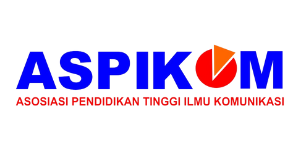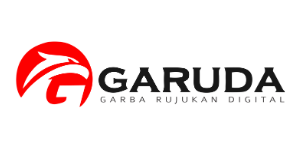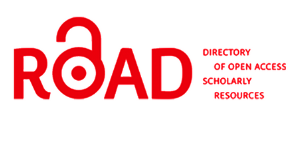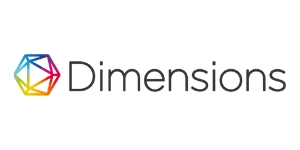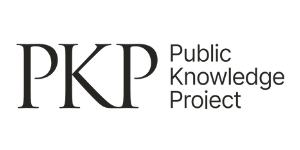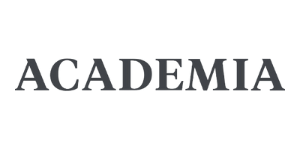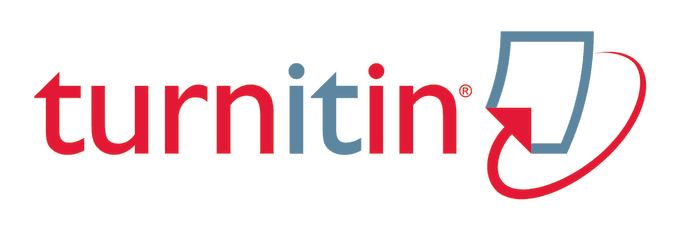Author Guidelines
Script Format
Manuscript is typed on A4 paper, around 5000-7000 words in Calibri 12 pt and space 1.15.
The writing system for research outcome consists of:
- Systematic articles of research results are (1) Title, (2) Author’s name (Affiliate address, email address), (3) Abstract (accompanied by keywords), (4) Introduction, (5) Methodology, (6) Result and discussion, (7) Conclusion, (8) Author’s Biography, (8) References
- Tables should be centered, with titles located at the top of the table. Font style and size are Calibri, 10 for both table title and table contents. Please make sure your tables are legible and do not exceed page margins.
- Figure titles are also in Calibri 10. The figure must be centered and must not exceed page margins. The page can be rotated as a landscape page if it takes larger space.
- The list of references only contains referred sources, and all referred sources must be mentioned on the list. Reference sources consist of, at the least, 80% literature published in the last three years.
- The reference list is arranged in a manner that refers to APA style. Bibliography is written in alphabetical order by the name of the author, writer or in accordance with the thesis writing guidelines or thesis used.
- Check each referred article for accuracy and make sure every quoted work in the article is written in references. Works that are not cited but mentioned in references will be omitted by the editor.
Article Title - The title should maximum 12 words, Calibri 14 pt, bold, and centered. It should be clear, concise, and informative.
Abstract - The abstract should be between 200 and 250 words ONLY. The title “ABSTRACT” is in Calibri, font size 12 while the contents of the abstract are in font size 11. Make sure your abstract is insingle spacing and is justified. If your article is in Bahasa Melayu, an English title, abstract, and keywords are also required. Place these after your Bahasa Melayu abstract. See the example below. If your article is in English, please proceed to the “INTRODUCTION”, no need Malay abstract. Please avoid stating the author name in this manuscript, and make a separate file as a supplement file in your submission (can contain 3 suggestion reviewer’s names, author & university name, acknowledgement, and simple author biodata.
Keywords: State five keywords and italicize (in Calibri, font size 11). Introduction
Introduction - title and content should be in Calibri, font size 12. Please make sure your article meets the word count requirement of 5000 – 7000 words (from Introduction-Conclusion; excluding abstract, biodata and list of references). Your submission will be withdrawn if these requirements are not met.
The first paragraph in each section should be left-aligned and each following paragraph should be indented. Text should be single-spaced with no space between paragraphs. Please ensure that 80% of the citations in all the submitted manuscripts must be from sources published in recent years (3 years back from the year the manuscript is written). Some of the other papers had been held back from the scheduled publication because of using old sources as their study references.
Literature Review - The terms used in this section or chapters vary, among others: theoretical study, literature review, the basic framework of the theory, and adapted to guidelines. This section contains theories or the results of previous studies/research used as a basis for this research. The main criterion for theories used as a foundation is the relevance to the topics/concepts/variables studied. Hypotheses are explained in the literature review section. This section is typed in Calibri 12pt, justify, and space 1.15. This section presented with a length of 10-15% of the article's total length.
Subheadings are italicized and left-aligned
- For lower level headings, use a,b,c
Methodology - The research method is carried out with the subject matter (1) Research Design, (2) Research Objectives (Population and sample), (3) Data Collection Techniques and instrument development, and (4) Data Analysis Techniques. Meanwhile, tables and figures are presented center, as shown below and cited in the manuscript. This section is typed in Calibri 12pt, justify, and space 1.15. This section presented with a length of 10-15% of the article's total length. Please quote from recent sources to support your statement.
Result and discussion - The results of the research presented are the findings of the research conducted. Illustration of research results can use graphs, tables, or images. The results presented are meaningful, and relevant findings contain systematic data presentation relevant to the problem statement. In addition, this part also contains reflection/discussion according to the research findings. In presenting the discussion, use a comprehensive explanation to elaborate the whole data found during the research. By doing so, you can fill the gap of knowledge. Findings that rely on meaning construct tend to present a theoretical framework, so there will be an unnecessary repetition as explained in the research methodology. Calibri 12pt, justify and space 1.15. This section is shown with a length of 50-70% of the article's total length.
Conclusion - The conclusion is the author's affirmation of the research results and discussion or answers to the proposed hypothesis (title). Conclusions must answer the research objectives. Avoid speculation in concluding. Conclusions must be based on facts found in the research results. Arial 12pt, justify and space 1.15. This section presented with a length of 10-15% of the article's total length.
Biography – The biographical statement should include the author(s) full name. In addition, it is also appropriate to discuss your personal history, academic program and/or field placement, and interest in the article's subject. The biographical statement may not exceed 75 words.
References – References are to be put onto a new page. The latest reference is sought, consisting of scientific journals amounting to 80% of the entire bibliography that has been published in the last 3 years. All references should be written down in reference using American Psychological Association (APA) style. The bibliography is written alphabetically by the author's name, writer, or following the thesis writing guidelines or thesis used and no need to categorised in groups. It is recommended to use a reference application (reference manager) such as Mendeley.
Book
Connoly, P. (2007). Quantitative Data Analysis in Education A Critical Introduction Using SPSS. USA and Canada: Routledge
Book chapter
Gelfand, M. J. & Cai, D. A. (2004). Cultural structuring of the social context of negotiation. In M. J.Gelfand & J.M.Brett (Eds.), The handbook of negotiation and culture (pp.238-257) California: Stanford Business Books.
Journal Article
Flanagin, A. J., dan Metzeger, M. J. (2008). Digital Media and Youth: Unparalleled Opportunity and Unprecedented Responsibility. 5-28
Journal article with DOI
Spreer, P., Rauschnabel, P.A. (2016). Selling with technology: Understanding the resistance to mobile sales assistant use in retailing. Journal of Personal Selling & Sales Management, 36 (3), 240-263. doi:10.1080/0885134.2016.1208100
Jurnal article on website
Hsing, Y., Baraya, A., & Budden, M. (2005). Away with SWOT Analysis: Use Defensive/Offensive Evaluation Instead. Journal of applied Business Research, 21(2), 105-112. Retrieved from hhtp://journals.cluteonline.com/index.php/JABR/
Newspapers article
Howe, J (2007, November 16). Manawatu worth $8. 1b. Manawatu Standard, p.1.
Newspapers article on website
Riza, F. (2014, April 6). KPID Kalimantan Barat siapkan roadmap informasi perbatasan. Retrieved from http://kalbar.antarnews.com/berita/3552/kpid-kalbar-siapkan-road-map-informasi-perbatasan.
Website
ASEAN. (2018). Top 10 e-commerce sites in Indonesia in 2018, by monthly traffic (in million clicks). Retrieved from https://www.statista.com
Website document
Young, B. (2013). Emmanuel Levinas and “the face of the Other”. Retrieved form https://english.byu.edu/faculty/youngb/levinas/face.pdf
Book Translation
Miles, M. B., & Huberman, A. M. (1992). Analisis data kualitatif buku sumber tentang metode-metode baru. Jakarta: Universitas Indonesia Press.

